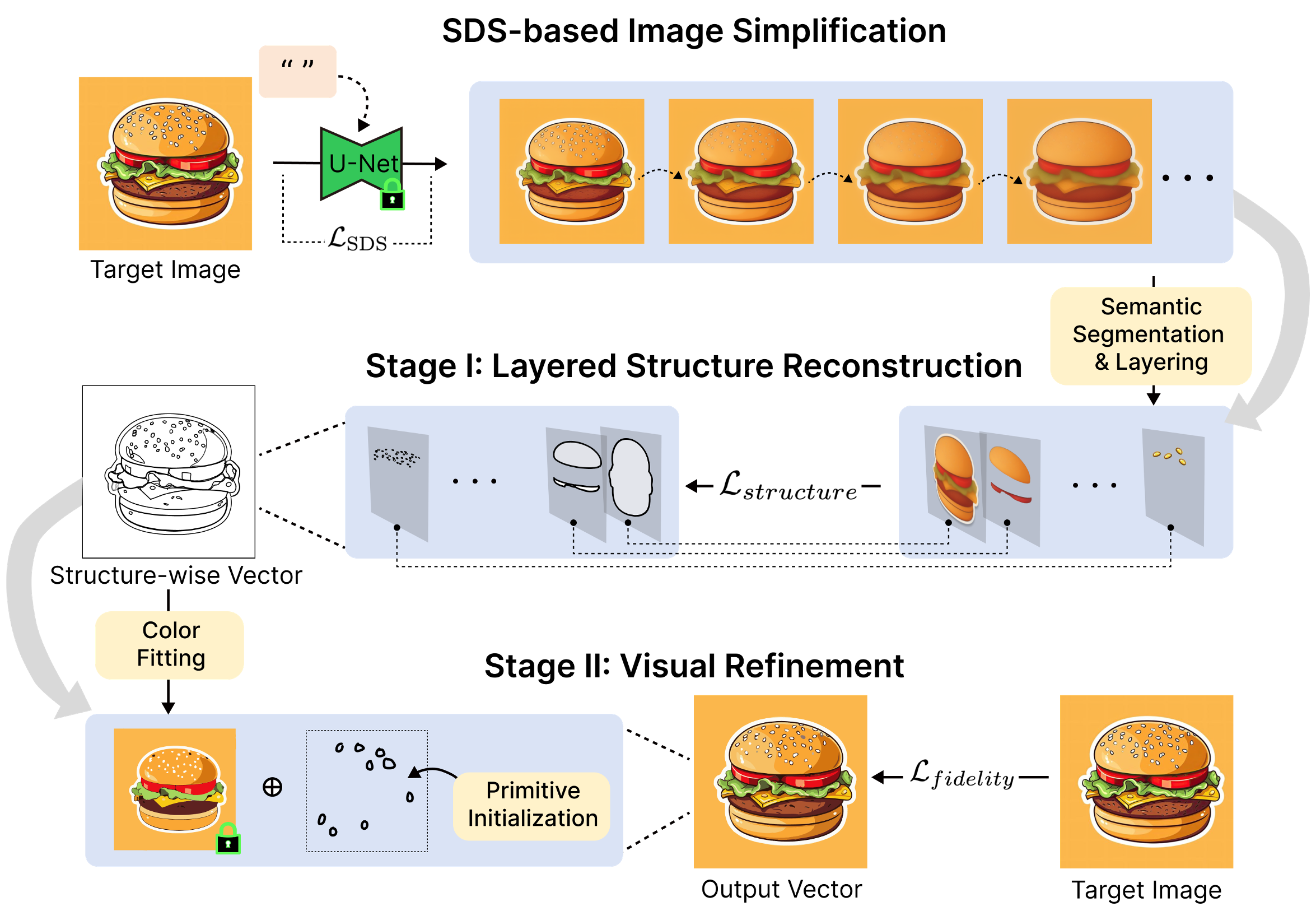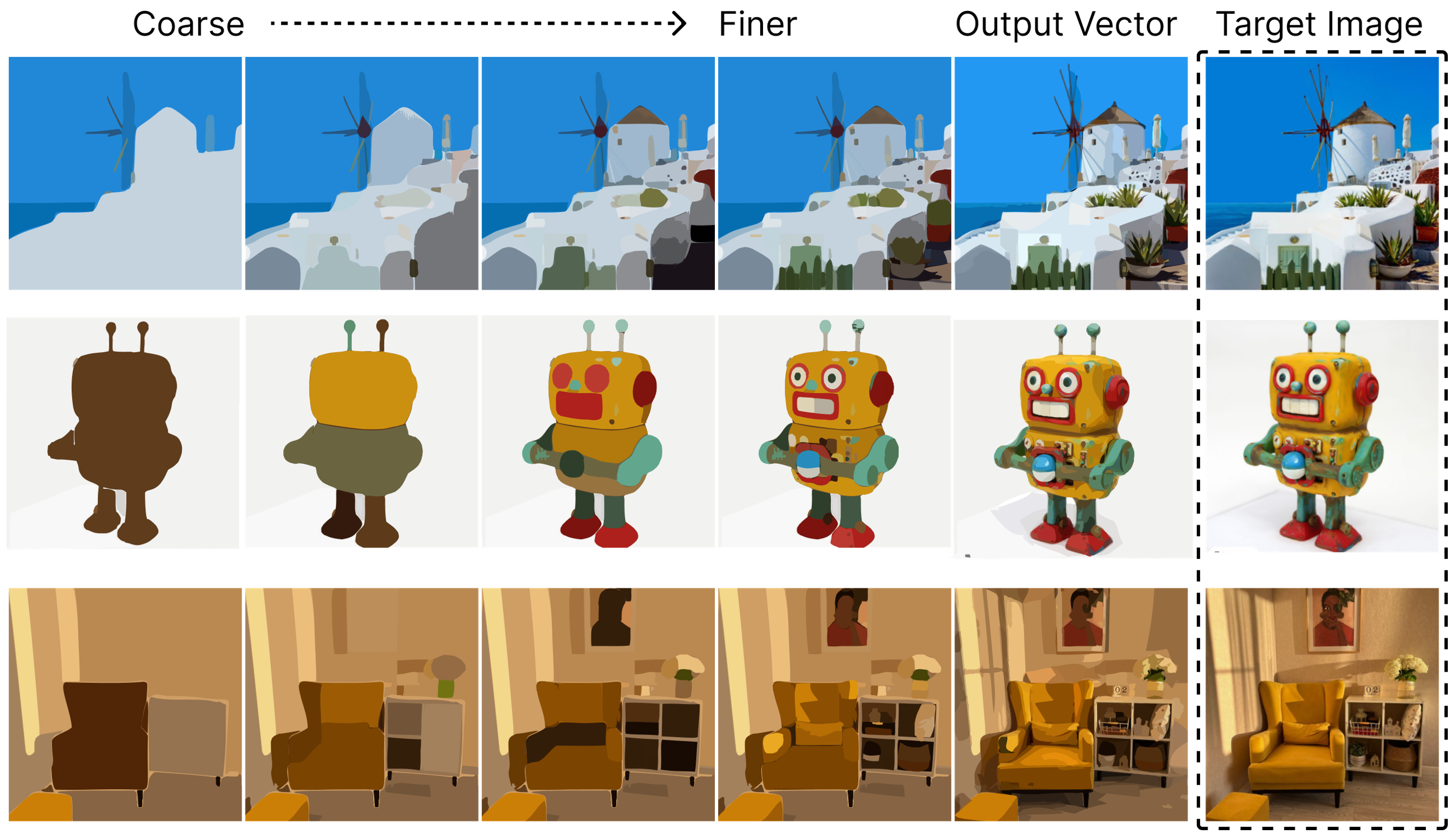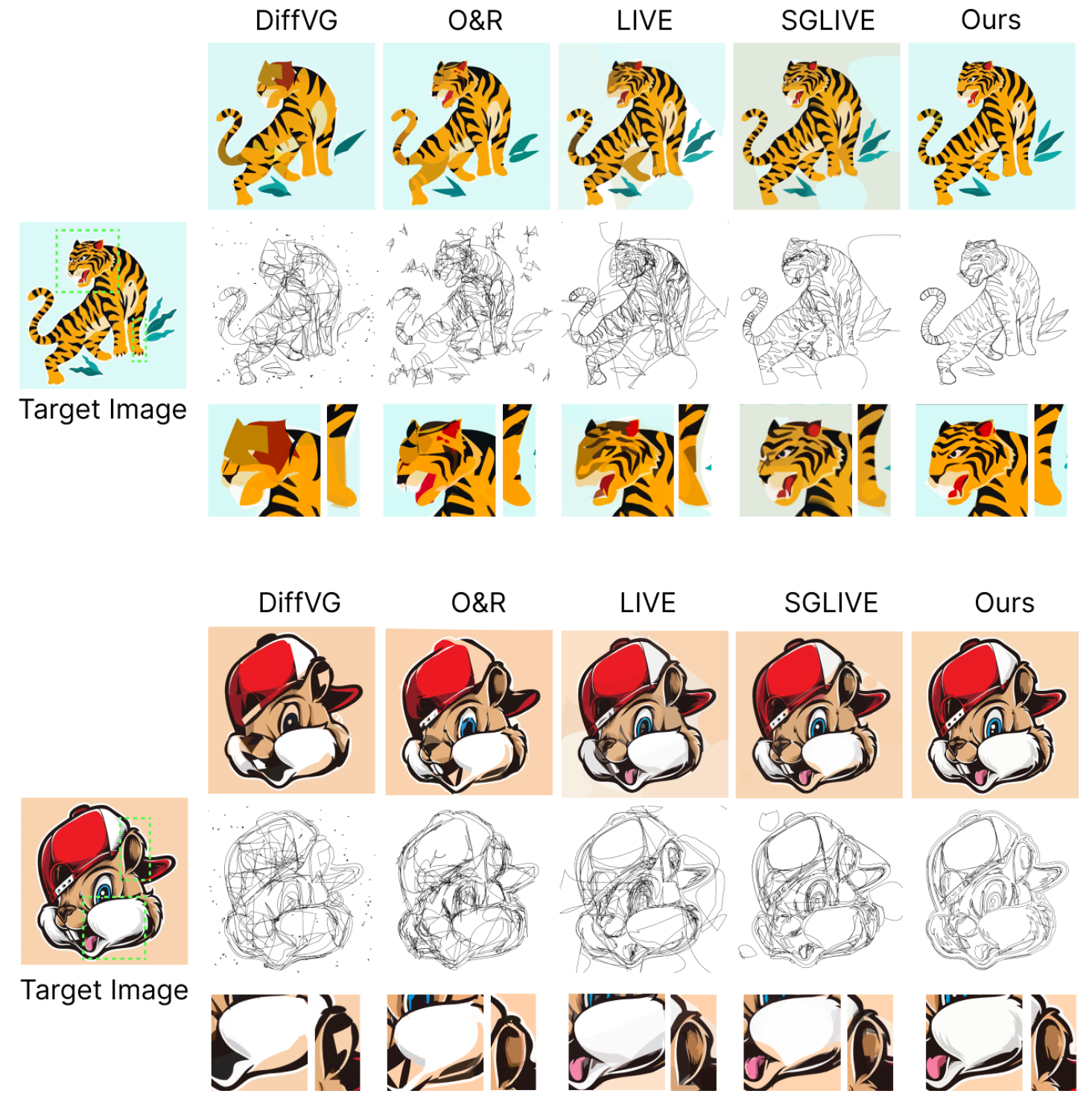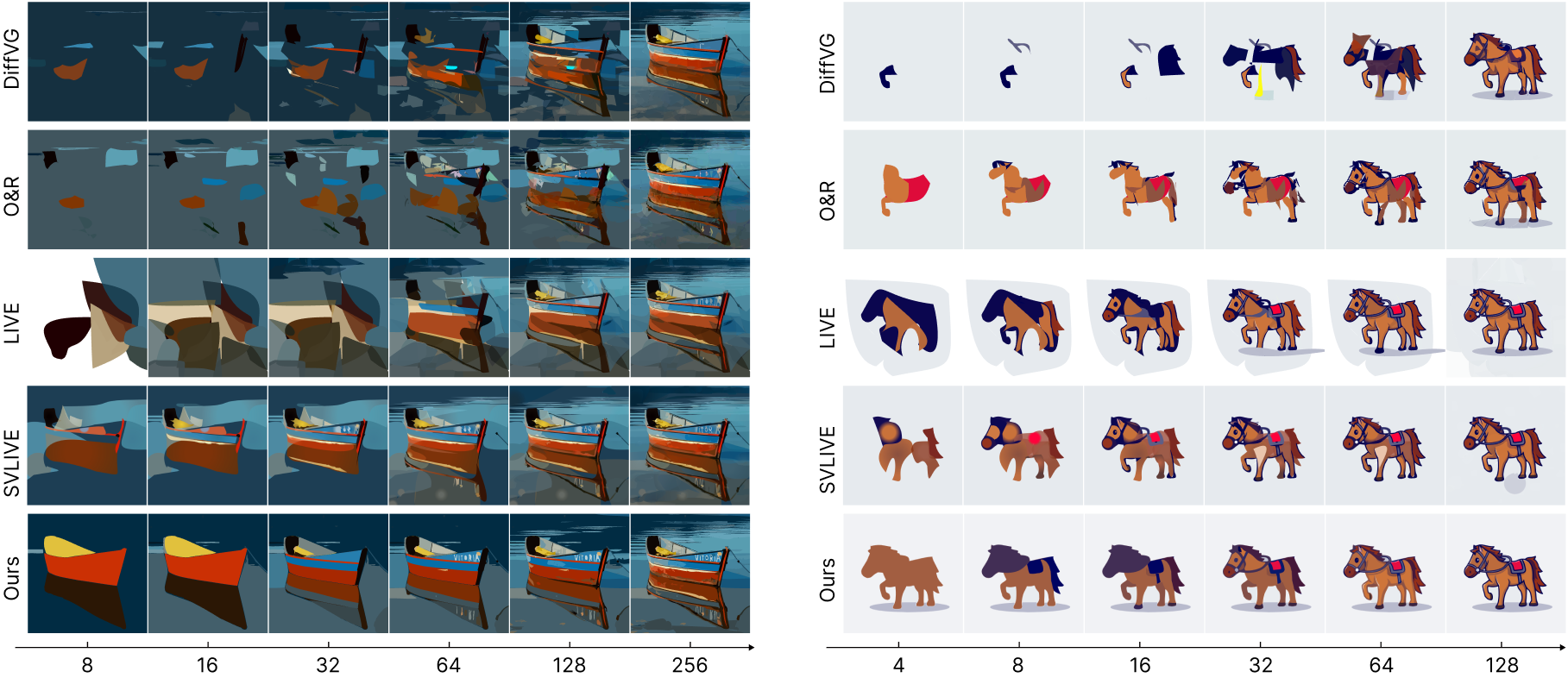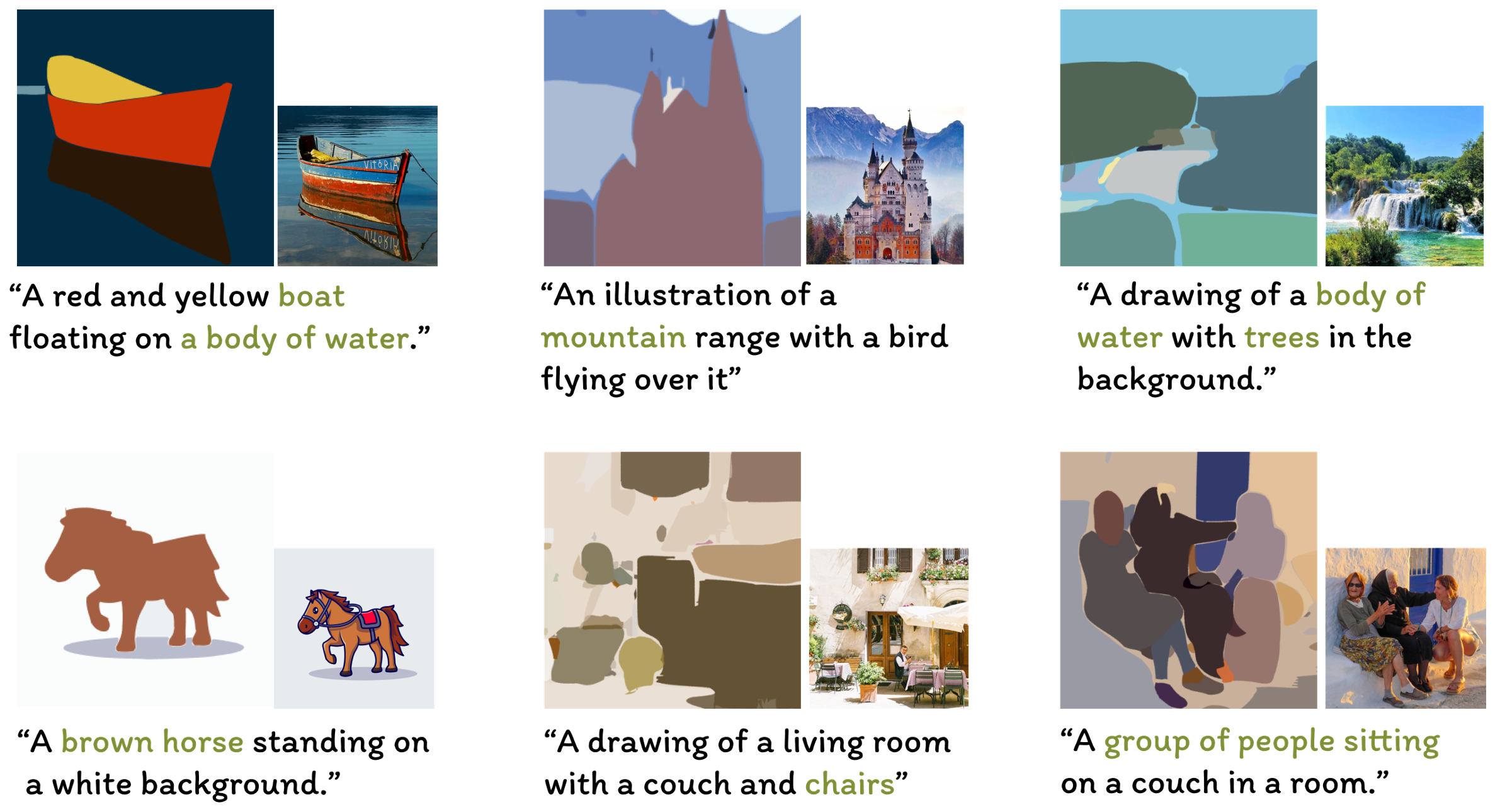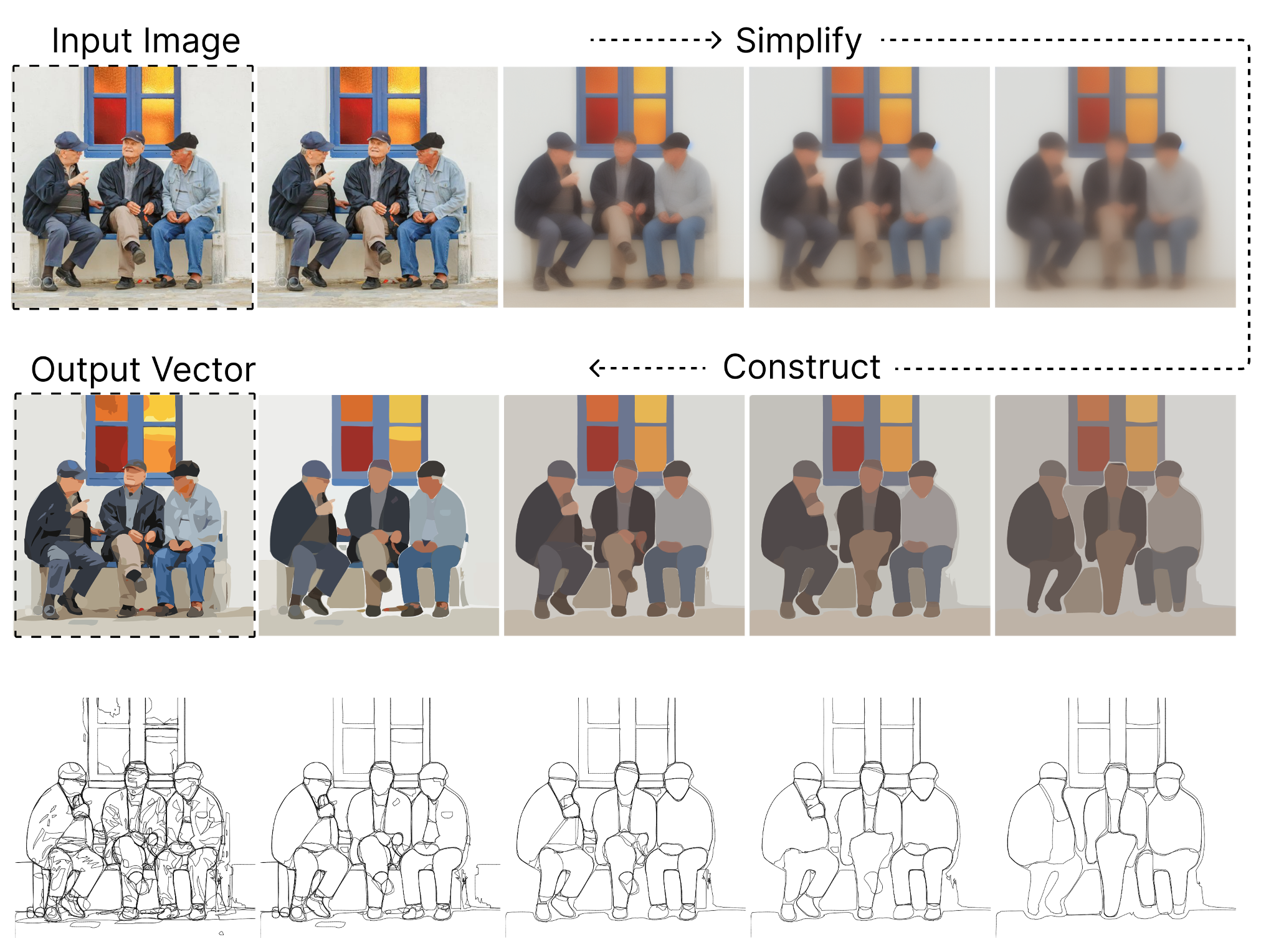
Layered vectorization: by generating a sequence of progressive simplified images (top row), our technique reconstructs vectors layer by layer, from macro to finer details (middle row). Our approach maintains the vectors compactly aligned within the boundaries of explicit and implicit semantic objects (bottom row).
